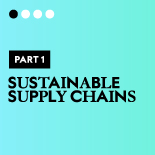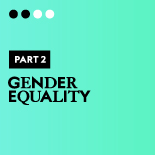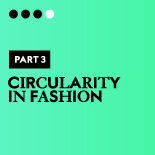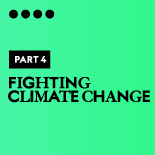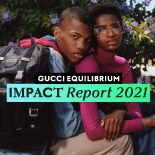
Written By Dorothy Neufeld
Graphics & Design
- Zack Aboulazm
Published August 4, 2022
•
Updated August 4, 2022
•
TweetShareShareRedditEmail
The following content is sponsored by Gucci Equilibrium.

Creating Sustainable Supply Chains in Luxury Fashion
From regenerative farming to bio-based materials, leaders in luxury fashion are taking bold action to create more sustainable supply chains. As a result, companies have made strides in reducing their environmental impacts—with innovative visions for the future.
This infographic from Gucci Equilibrium breaks down how the luxury fashion industry is integrating sustainable practices into supply chains, opening the door to new opportunities and innovation.
The State of Sustainable Supply Chains
More than ever, luxury fashion companies are putting their money where their mouth is. In fact, references to “sustainability” in annual reports from 15 of the largest fashion companies are now on par with financial terms.
| Number of Times Mentioned in Annual Reports | 2015 | 2016 | 2017 | 2018 | 2019 |
|---|---|---|---|---|---|
| "Profit", "Growth" | 2,167 | 2,329 | 2,366 | 2,711 | 2,539 |
| "Sustainable", "Sustainability" | 1,209 | 1,553 | 1,529 | 1,846 | 2,467 |
Not only are companies talking about sustainability, they are taking action to reduce their impacts across their carbon emissions, biodiversity, water use, waste production, chemical use, and pollution.
Diving deeper, the luxury fashion industry is finding new ways to reduce their impacts while increasing sustainability across their supply chains:
- Sustainable sources that give back to nature: Partner with suppliers using regenerative farming practices.
- Materials: Use organic, regenerative and recycled materials.
- Design: Embed circularity principles and innovate.
- Production: Ensure manufacturing best practices.
How are luxury fashion companies driving transformative change across their supply chains?
1. Sustainable Sourcing
One of the largest impacts linked to fashion comes from raw material production. From cotton to leather, where and how raw materials are sourced is the first step for responsible and sustainable fashion.
Here’s how fashion brands are planning to improve sustainable sourcing by 2025, based on a survey of 64 respondents who oversee more than $100 billion in combined sourcing value:
| Type of Sustainable Sourcing | Description | % of Respondents |
|---|---|---|
| Sustainable Materials | Planning to source the majority of their products with sustainable materials | 55% |
| Bio-Based Materials | Looking to integrate on par with recycled nylon, recycled wool and responsible wool | 45% |
| Recycled Materials | Planning to use recycled polyester from plastic waste | 75% |
| Traceability | Planning to have full traceability from fiber to store | 65% |
In short, sector-wide adoption of best practices to ensure a lower carbon footprint is at the core of sustainable supply chains.
2. Innovation
Adopting novel, low-impact solutions for materials and manufacturing is a key driver to minimizing impacts in luxury fashion. The good news is that the vast majority—38 out of 40 leading fashion companies—are looking for leather alternatives and more sustainable materials.
It’s worth noting that innovating to create more sustainable manufacturing methods and eco-friendly materials can involve years of research and development. As one part of this process, chrome and metal-free tanning support more sustainable leather supply chains. This is important because they prevent the risk of chemical contamination in the local water and soil supply.
3. Training and Capacity Building
Creative designers and artisans influence many dimensions of luxury fashions’ impact, including cultural, social, environmental and economic factors.
In fact, 80% of the environmental impact of a garment is determined at the design stage. To ensure the quality and longevity of luxury creations, the traditions of makers play an important role in creating sustainable designs of the future. For this reason, fashion companies have set up specialized training programs to pass on know-how and craftmanship skills to the next era of talent.
4. Supporting Women’s Empowerment
Empowering women and underrepresented groups is integral to creating equitable and sustainable supply chains.
Although women make up around 80% of apparel supply chains, they receive lower pay as well as fewer opportunities for advancement than men. To tackle gender inequality, leaders in luxury fashion are working to close the gender gap and expand training for women through leadership, assertiveness, and career development training.
5. Green Financing
Suppliers and companies are utilizing green financing to achieve their environmental, social, and governance (ESG) objectives. These loans can cover a wide scope of sustainable projects, including:
- Renewable energy
- Green logistics
- Circular business models
- Management of hazardous chemicals
- Increasing gender equality in the supply chain
With millions of dollars in green loans going to hundreds of suppliers, companies are focused on making a sustainable transition possible.
How Gucci is Redesigning the Future
Innovation and creativity drive sustainability, offering many solutions to luxury supply chains. As a leader in sustainable luxury fashion, Gucci is delivering on its commitments by focusing on a broad range of best practices with positive impact, such as:
- Sustainable Sourcing: Committed to sourcing materials from regenerative agriculture across wool, leather, cotton, silk, and linen.
- Innovation: Demetra, an innovative material, combines efficient processes with animal-free raw materials that are primarily from sustainable, renewable, and bio-based materials.
- Training and Capacity Building: As part of Gucci École de l’Amour, provided technical training to 461 employees in 2021.
- Supporting Women’s Empowerment: As part of The Women in Supply Chain Project, 129 women participated in trainings from Gucci’s Italian supply chain, reaching more than 67 Gucci suppliers.
- Supplier Financing: Provided $307 million in loans including green financing across 175 Italian suppliers.
Gucci is playing an important role in supporting sustainability in luxury supply chains.
In part two of the Equilibrium Series, we look at how luxury fashion is driving positive impact on supporting gender equality.

Please enable JavaScript in your browser to complete this form.Subscribe to our free newsletter and get your mind blown on a daily basis: *Sign up
Related Topics: #sustainable supply chain #luxury fashion #green financing #sustainable materials #material innovation #recycled materials #sustainable sourcing #regenerative agriculture #training & capacity building #gucci equilibrium
Click for Comments
var disqus_shortname = "visualcapitalist.disqus.com";
var disqus_title = "Creating Sustainable Supply Chains in Luxury Fashion";
var disqus_url = "https://www.visualcapitalist.com/sp/creating-sustainable-supply-chains-in-luxury-fashion/";
var disqus_identifier = "visualcapitalist.disqus.com-151335";
You may also like
-
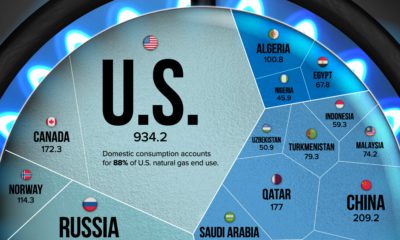
Energy21 mins ago
Which Countries Produce the Most Natural Gas?
Natural gas prices have risen since Russia’s invasion of Ukraine. This visualization highlights the world’s largest natural gas producers.
-

Politics22 hours ago
A Century of Unions in Europe (1920-2022)
This year marks 100 years since the birth of the Soviet Union. How have countries in and near Europe aligned themselves over the last century?
-
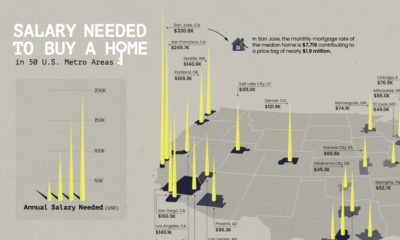
Personal Finance2 days ago
Mapped: The Salary You Need to Buy a Home in 50 U.S. Cities
Is owning a home still realistic? This map lays out the salary you’d need to buy a home in 50 different U.S. metro areas.
-

VC+7 days ago
What’s New on VC+ in August?
This month, along with regularly scheduled features, our special dispatch checks in on how expert predictions for 2022 are turning out.
-
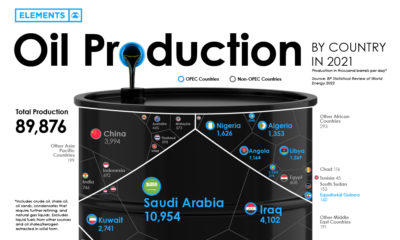
Energy7 days ago
Visualizing the World’s Largest Oil Producers
Global oil production averaged 89.8 million barrels of oil per day in 2021. Here are the world’s largest oil producers.
-
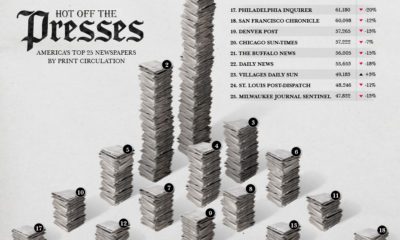
Business1 week ago
Visualized: The Top 25 U.S. Newspapers by Daily Circulation
Extra, extra read all about it—these 25 popular U.S. newspapers are trending downwards in their daily print circulation year-over-year.
Subscribe
Please enable JavaScript in your browser to complete this form.Join the 300,000+ subscribers who receive our daily email *Sign Up
The post Creating Sustainable Supply Chains in Luxury Fashion appeared first on Visual Capitalist.
